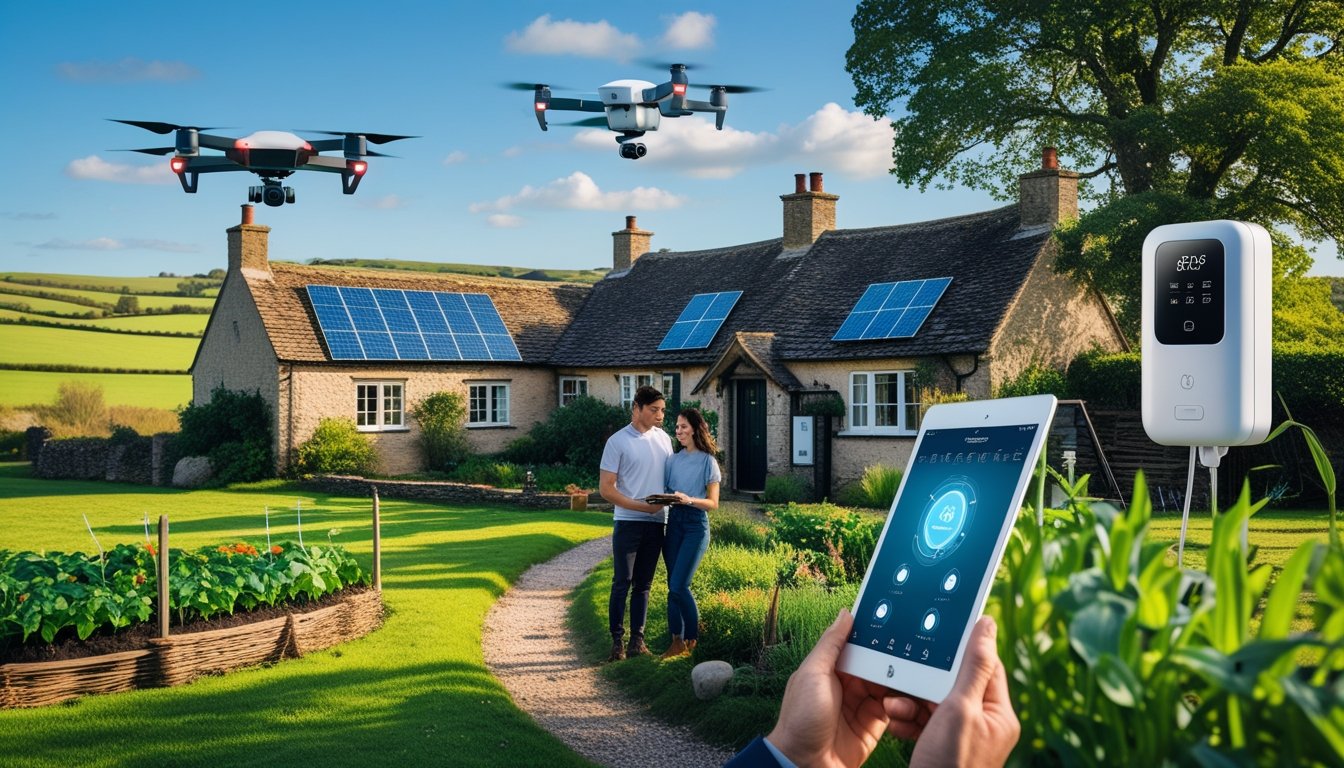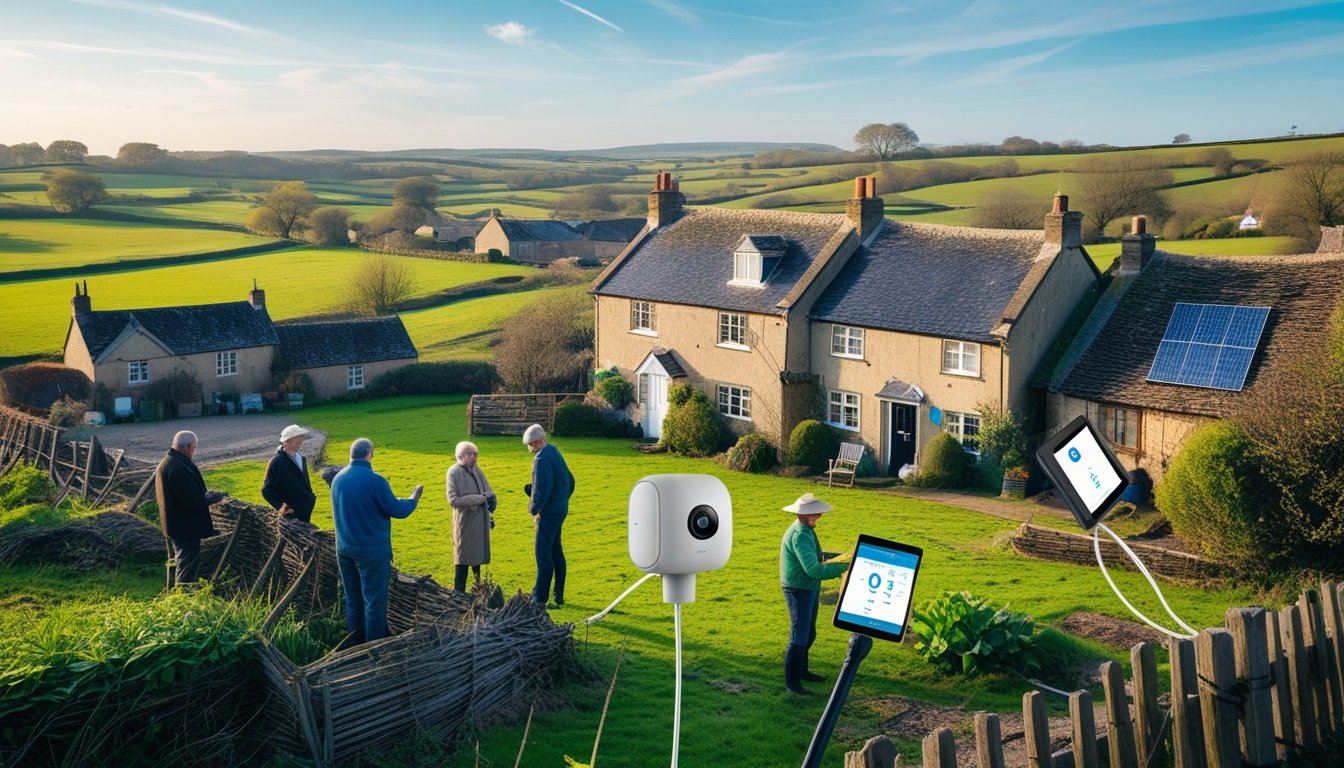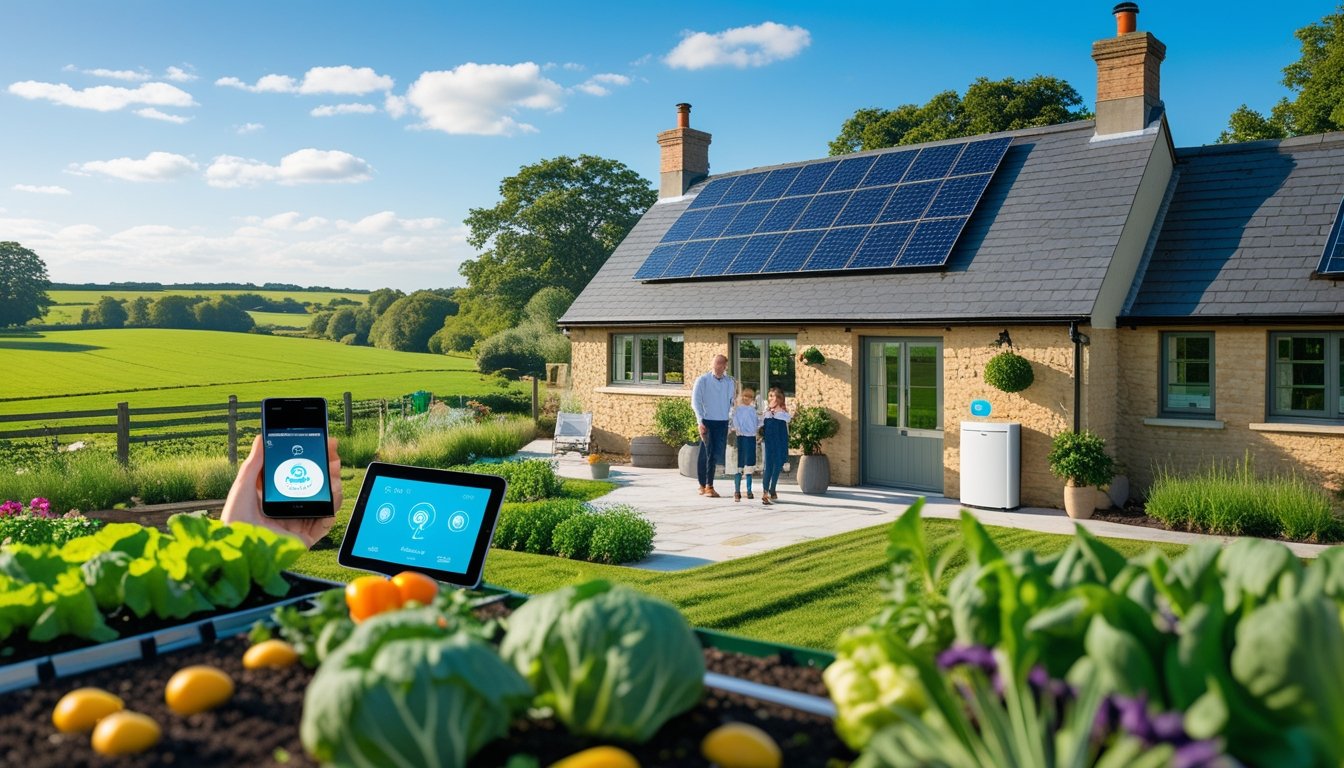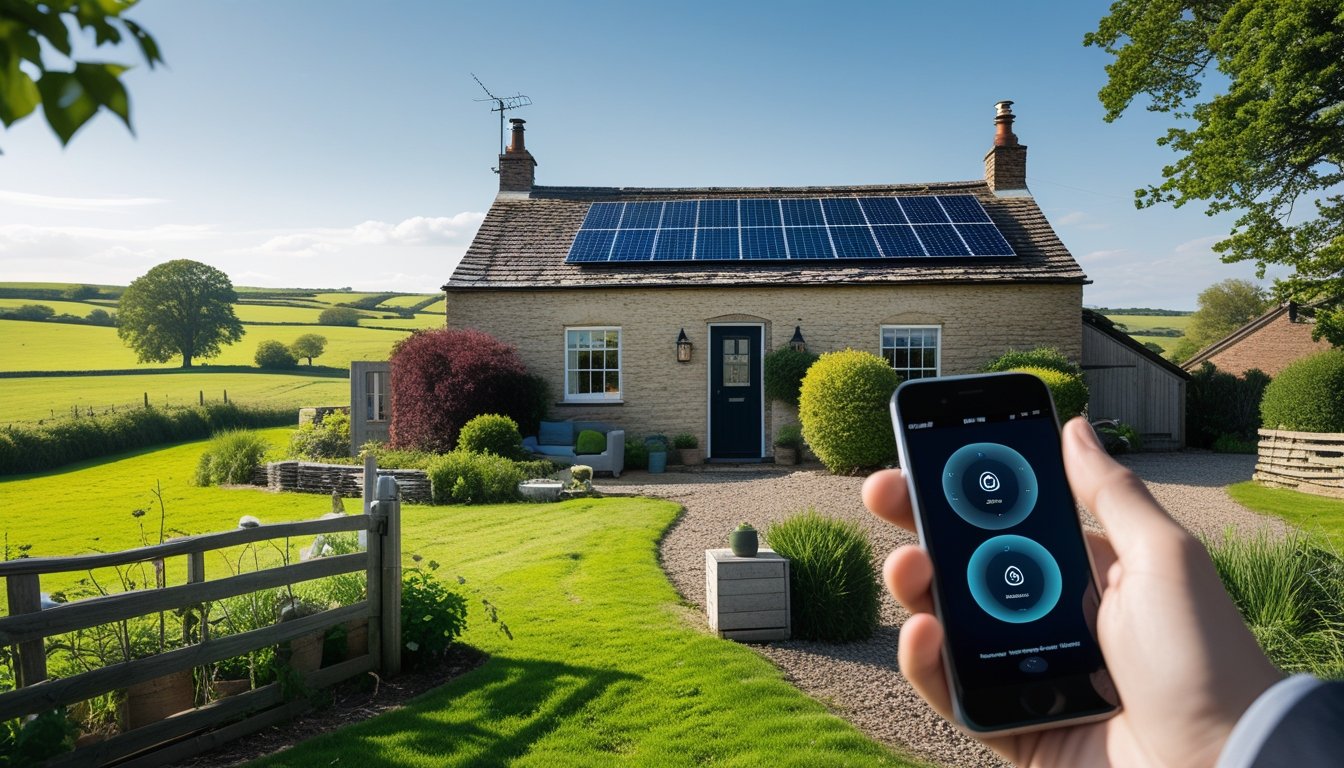Late updated: 02 Oct 2025 12:10
Written by: Oliver Bennett
Smart Gadgets Transforming UK Rural Living: Innovative Solutions Enhancing Daily Life
Smart gadgets are quietly reshaping the way we live in rural UK communities, providing solutions that seamlessly blend modern convenience with traditional charm. While the tranquillity of rural life is a cherished aspect for many, these communities often lag in adopting energy-efficient technologies compared to urban counterparts. By utilising smart home technologies, rural residents can significantly enhance energy efficiency and convenience, creating a more sustainable lifestyle.

Our exploration of this wave of technological advancement uncovers how devices like intelligent climate control systems, smart lighting, and energy-efficient appliances are making their mark. Not only do these gadgets reduce energy consumption and costs, but they also improve the quality of life by automating routine tasks, all while maintaining the unique character of rural homes.
The appeal of smart technology extends beyond individual households to whole communities, driving economic growth by improving connectivity, healthcare, and agricultural efficiency. As more rural homes adopt these innovations, we're witnessing a transformation that promises to redefine rural living for generations to come.
Key Takeaways
- Smart gadgets are enhancing the efficiency and comfort of rural UK homes.
- Energy-efficient technologies provide sustainable solutions for rural living.
- Technological adoption boosts connectivity and economic opportunities in rural areas.
Smart Gadgets Redefining Rural UK Living

Smart gadgets are reshaping rural UK living by improving energy efficiency, enhancing connectivity, and increasing home convenience. These advances make our homes smarter, more adaptive, and environmentally friendly.
Innovations in Energy Management and Efficiency
Efficient energy management in rural UK homes is revolutionised by smart technology. Intelligent systems such as smart thermostats and LED lighting play key roles. Devices like Google Nest adjust temperatures based on real-time data and learned preferences, helping reduce energy bills significantly.
LED lighting, offering lower power consumption and longer lifespan, is ideal for rural settings where energy resources might be limited or costly. Automating these systems enables seamless control over home energy usage. Such technology lowers energy consumption while maintaining comfort and ease of use, aligning well with the shift toward sustainable living.
Enhancing Connectivity and Automation
Rural areas are becoming more connected through automated solutions and improved connectivity. Smart home technology, such as security systems and automated lighting, provides peace of mind and efficiency. These systems can be controlled remotely, ensuring homeowners stay informed of what happens in their absence.
Reliable internet connections are crucial for these advancements, facilitating seamless communication between devices. As we see more innovation in these technologies, rural homes gain the tools for modern, connected living, making formerly isolated areas more integrated and engaged with broader networks. This connectivity also enables remote work and access to various digital services, reducing geographic limitations.
Transforming Home Comfort and Convenience
Smart technology enhances comfort and convenience by automating daily tasks. Features like voice-controlled assistants and smart appliances simplify household management. Imagine controlling lighting, heating, and entertainment systems with simple voice commands or smartphone taps.
Automation also covers routines such as scheduling lights or adjusting blinds based on natural lighting, improving energy efficiency while elevating home comfort. These technologies make living in rural UK both comfortable and cutting-edge, merging the tranquillity of countryside life with the sophistication of modern technology. As these systems evolve, the rural lifestyle becomes more dynamic and adaptable, reflecting innovations that respond to our changing needs.
Key Smart Solutions for Sustainable Rural Homes

Sustainable rural homes benefit immensely from smart solutions aimed at enhancing energy efficiency and reducing environmental impact. These technologies offer practical tools for managing heating, lighting, and resource conservation. Let’s explore how these innovations come to life in rural settings.
Advanced Smart Thermostats and Heating Controls
Smart thermostats, such as the Google Nest, revolutionise the way we manage heating. These devices adjust temperatures based on occupancy and personal preferences. By learning our habits, they make proactive adjustments that improve comfort and save energy.
Energy efficiency is a focus, with smart thermostats optimising energy use by ensuring heating systems operate only when needed. This reduces waste and lowers utility bills. The ability to control these devices remotely via apps brings convenience to our fingertips, allowing us to make instant changes from anywhere.
Smart thermostats integrate with existing heating systems easily. They blend traditional methods with cutting-edge technology, bridging the gap between past and future. Through advanced sensors and algorithms, energy management becomes both intuitive and precise.
Eco-Friendly Smart Lighting Systems
Eco-friendly smart lighting offers rural homes an effective way to manage lighting needs while cutting down on energy consumption. LED lighting is a cornerstone of this technology, providing high-efficiency illumination with a longer lifespan compared to conventional bulbs.
Automated lighting systems can turn lights on or off based on movement or natural light levels. This ensures lights are used only when necessary, significantly reducing unnecessary energy use. Additionally, smart lighting solutions can be programmed to simulate human activity, enhancing security.
Customisable scenes and scheduling allow households to tailor their lighting environment to various activities. Whether it’s a bright setting for work or a cosy ambience for relaxation, smart lighting adapts effortlessly to different needs.
Automated Energy and Water Conservation Technologies
In rural living, conserving energy and water is vital. Automated solutions play a crucial role in this by monitoring usage patterns and implementing adjustments without manual intervention. These systems operate behind the scenes, ensuring resources are conserved efficiently.
Features like smart metering provide real-time insights into consumption, empowering us to make informed decisions. Automated irrigation systems adjust watering schedules based on weather conditions and soil moisture levels, optimising water use.
Such technologies not only reduce resources usage but also contribute to sustainability and cost savings. They emphasise proactive management and data-driven insights, transforming how we utilise essential resources.
Frequently Asked Questions

In rural UK settings, smart gadgets are revolutionising daily life by optimising energy efficiency, enhancing security, and advancing healthcare. The integration of IoT technology in agriculture is another noteworthy development, showcasing substantial benefits in these less urbanised regions.
How are smart gadgets improving energy efficiency in rural households?
Smart gadgets allow rural households to monitor and control energy use with precision. Devices like intelligent thermostats and energy-efficient lighting systems contribute to reducing overall consumption. They also provide real-time data, enabling residents to make informed decisions.
What impact has IoT technology had on agriculture and farming practices?
IoT technology enhances farming through precision agriculture tools. Sensors monitor soil conditions, weather patterns, and crop health, which optimises resource usage. This approach leads to increased yields and more sustainable farming practices.
In what ways are smart home devices enhancing security for rural properties?
Smart home devices bolster security by offering remote monitoring and control. Security cameras, smart locks, and motion sensors give rural property owners peace of mind by enabling them to keep an eye on their homes from afar.
What are the challenges in integrating smart technology in remote areas?
Infrastructure is a significant challenge in remote areas. Limited internet connectivity and power supply issues can hinder the effective use of smart technology. Overcoming these challenges requires investment in rural tech infrastructure.
How is rural healthcare being transformed through smart gadget innovations?
Smart gadgets in healthcare improve remote diagnostics and patient monitoring. Wearable devices track vital signs and transmit data to healthcare providers, facilitating timely interventions and reducing the need for frequent travel to urban medical centres.
What advancements have been made in providing reliable internet connectivity for smart devices in rural locations?
Recent advancements include the expansion of fibre optic networks and wireless broadband solutions. These efforts aim to ensure that rural areas have the necessary connectivity to support smart devices, enhancing their functionality and effectiveness.
